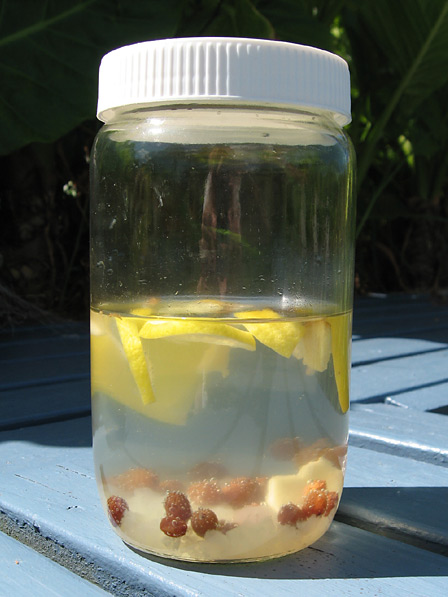RIP! Sad news about our water kefir grains: After a long run of bad health, they stopped reproducing altogether. I finally gave up on them and am looking for some new ones. So far, no luck. If anyone reading this site has any suggestions about where to get some (a New Zealand source), I’d love to hear about it.

Water kefir, in healthier times
Since having this problem, I’ve heard from a couple of other people who have had the same thing happen. Like me, they felt they had taken very good care of the grains, and had followed the directions for keeping them healthy. I have been searching around for any more pointers for keeping a robust colony of water kefir, in hopes of having better luck with the next lot of grains I get (if I can find any!).
The latest edition of the Weston A. Price foundation journal, “Wise Traditions,” included an article which listed some interesting tips:
* Apparently, adding sea coral, limestone, or eggshells to the brewing water kefir will improve the growth of the kefir grains as well adding nutritional kick to the resulting drink. I can’t wait to try this!
*”be sure to rinse the grains between each batch to prevent a build-up of yeast that may reduce their growth.” Well, I was doing this already, but. . .
*”Dom’s Kefir In-site” (http://users.chariot.net.au/~dna/kefirpage) recommends using an un-refined mineral-rich sweetener, such as Rapadura or muscovado sugar rather than refined sugar. Yikes! I was actually using white sugar for our water kefir, so maybe that was part of the problem.
I’ve heard that you can convert dairy kefir grains for use in water/sugar instead of milk, but haven’t yet found much information about how to do this. I’m not sure whether the grains can be permanently converted to culture and propagate in other substances, or whether they will eventually fizzle out if they are not returned to the milk.
Fortunately our kombucha culture is still thriving, so we have at least one kind of delicious home-made fermented drink to enjoy while we are without any water kefir.


